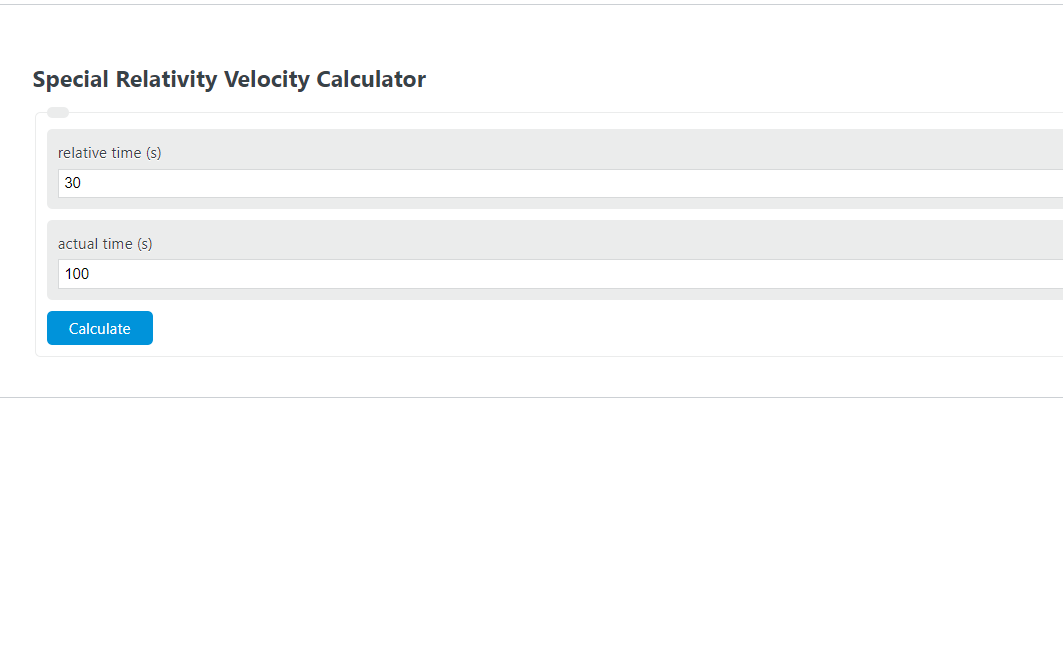Enter the relative time and the actual time into the calculator to determine the velocity of an observer.
- All Velocity Calculators
- Velocity Calculator
- Length Contraction Calculator
- Time Dilation Calculator
- Warp Speed Calculator
Special Relativity Velocity Formula
The following equation is used to calculate the velocity from time dilation.
V = SQRT(1 - (RT/T)^2)*C
- Where V is the observer velocity (m/s)
- RT is the relative time (s)
- T is the actual time (s)
- C is the speed of light (299 792 458 m/s)
To calculate the observer velocity, square the ratio of relative time to actual time, subtract this result from 1, take the square root, and finally, multiply the speed of light.
What is a Special Relativity Velocity?
Definition:
Special Relativity Velocity describes the velocity of an observer based on the time dilation experienced by the observer.
How to Calculate Special Relativity Velocity?
Example Problem:
The following example outlines the steps and information needed to calculate Special Relativity Velocity.
First, determine the relative time. In this example, the relative time is found to be 30s.
Next, determine the actual time. For this problem, the actual time is found to be 100s.
Finally, calculate the Special Relativity Velocity using the formula above:
V = SQRT(1 – (RT/T)^2)*C
V = SQRT(1 – (30/100)^2)*299,792,458
V = 285,983,777.975 m/s
FAQ
What is time dilation in the context of special relativity?
Time dilation is a phenomenon predicted by Albert Einstein’s theory of special relativity, which states that the time measured by an observer moving relative to a stationary clock will appear to be slower than the time measured by an observer at rest with respect to the clock. This effect becomes more pronounced as the observer’s velocity approaches the speed of light.
How does the speed of light affect calculations in special relativity?
The speed of light (approximately 299,792,458 meters per second in a vacuum) is a fundamental constant in the universe and serves as the ultimate speed limit for any object or signal. In special relativity, the speed of light is invariant, meaning it is the same for all observers, regardless of their relative motion. This invariance plays a crucial role in the equations of special relativity, including the calculation of time dilation and length contraction.
Can an object actually reach the speed of light?
According to current physical theories, an object with mass cannot reach the speed of light. As an object’s velocity increases towards the speed of light, its relativistic mass increases, requiring ever more energy to accelerate further. It would require infinite energy to accelerate an object with mass to the speed of light, making it practically impossible according to our current understanding of physics.
